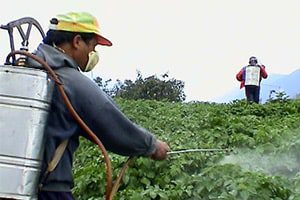
The number of babies born with gastroschisis had risen, nearly doubling since 1995, and research does not point to a reason for the increase. The large, new study looked at gastroschisis rates in millions of live births over 11 years, according to Reuters Health. The malformation is a hole in the baby’s abdomen and is […]
 The number of babies born with gastroschisis had risen, nearly doubling since 1995, and research does not point to a reason for the increase.
The number of babies born with gastroschisis had risen, nearly doubling since 1995, and research does not point to a reason for the increase.
The large, new study looked at gastroschisis rates in millions of live births over 11 years, according to Reuters Health. The malformation is a hole in the baby’s abdomen and is widely believed to be associated with exposure to certain chemicals; however, there no conclusive link confirming this has been made. Gastroschisis is more prevalent in the children of teenage mothers.
“We have a pattern where the prevalence is very much highest among young women and it’s growing more rapidly among that group than any other group,” said Russell Kirby, a professor at the University of South Florida and the lead author of the study, according to Reuters Health. The study does not explain the rise in incidences of gastroschisis, which is not a well-understood problem.
Gastroschisis is an inherited congenital abdominal wall defect that generally occurs in the intestines, but can occur in other organs. The organ typically develops outside the fetus’s abdomen and through an opening in the abdominal wall. Reuters Health described gastroschisis as an opening next to the belly button out of which the baby’s intestines protrude. The malformation requires immediate surgery to close the hole and place the organs back inside the body. While most babies born with gastroschisis do survive; however, some children develop problems with growth and development, said Kirby, noting that there is not a lot of information available on long-term outcomes for children born with this malformation.
In 1995, about 2.3 babies of every 10,000 born were born with gastroschisis. During the study period (1995-2005) and based on birth defect monitoring data from 15 states, 4,713 babies of 13.2 million born were born with the malformation, which is about 3.5 out of every 10,000, explained Reuters Health. In 2004, the numbers jumped to 4.4 out of 10,000. “I do believe the numbers,” James Robbins, a professor who studies birth defects at the University of Arkansas for Medical Sciences, told Reuters Health.
The increase was primarily seen in mothers under the age of 25 and especially seen in mothers under the age of 20. In fact, in 1995, eight babies were born with gastroschisis out of 10,000 to mothers who were under the age of 20. By 2005, that number nearly doubled to 15, according to the research published in the medical journal Obstetrics & Gynecology.
A prior study of women in Washington State revealed an increase risk of gastroschisis associated with the weed killer atrazine. The team at the University of Washington in Seattle was advised of the increase in the eastern portion of the state of Washington, which led them to hypothesize that there could be a link to that area’s environment, said Science Daily previously.
Smoking is also considered a risk factor, said Robbins. “I don’t think there’s a clear explanation for why the rates are going up,” added Robbins, who was not involved in this research, according to Reuters Health. Kirby mentioned that nutrition might play a part. “We know that there are influences of different vitamins and nutrients that definitely affect fetal development,” he said; however, concerning the relation to gastroschisis, “that’s just a suspicion.” Kirby’s team is continuing its research on data since 2005.
We also previously wrote that exposure to atrazine while a baby is still in the womb could cause the child to suffer a rare but potentially serious birth defect to their nasal passages, making it difficult for them to breathe. According to another ScienceDaily report on a study published in The Journal of Pediatrics, exposure to atrazine could impact an expecting mother’s endocrine system and could disrupt development of the fetus.


